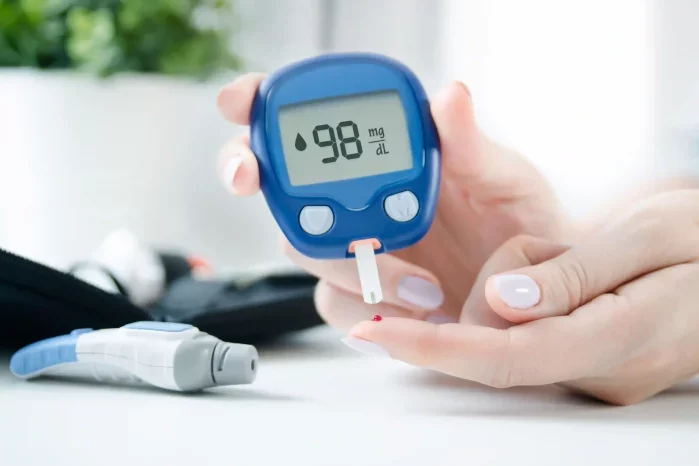Blood sugar monitoring is an essential aspect of managing diabetes and ensuring overall health. It involves various tests that measure the levels of glucose in the blood, providing critical information about how well the body is controlling blood sugar. Understanding these tests, what constitutes normal ranges, and how to interpret the results can help in the effective management of diabetes and other related conditions. In this article, we will explore the different types of blood sugar tests, their normal ranges, and their significance in diabetes care.
Types of Blood Sugar Tests
Several tests are used to measure blood sugar levels, each with its specific purpose and method. The most common tests include:
- Fasting Blood Sugar (FBS) Test
- Postprandial Blood Sugar (PPBS) Test
- Oral Glucose Tolerance Test (OGTT)
- Random Blood Sugar (RBS) Test
- Hemoglobin A1c (HbA1c) Test
- Continuous Glucose Monitoring (CGM)
Each of these tests provides unique insights into blood sugar levels and helps in different aspects of diabetes management.
Fasting Blood Sugar (FBS) Test
The fasting blood sugar test measures blood glucose levels after an individual has not eaten for at least 8 hours. This test is typically done in the morning before breakfast. It is one of the most common tests used to diagnose diabetes and prediabetes.
Normal Range: A normal fasting blood sugar level is less than 100 mg/dL (5.6 mmol/L).
Prediabetes Range: A fasting blood sugar level between 100 and 125 mg/dL (5.6 to 6.9 mmol/L) indicates prediabetes.
Diabetes Range: A fasting blood sugar level of 126 mg/dL (7.0 mmol/L) or higher on two separate tests indicates diabetes.
The FBS test is crucial for identifying abnormalities in blood sugar regulation that may not be apparent through other tests.
Postprandial Blood Sugar (PPBS) Test
The postprandial blood sugar test measures blood glucose levels two hours after eating a meal. This test helps assess how well the body manages glucose after food intake, providing insights into insulin function and glucose metabolism.
Normal Range: A normal postprandial blood sugar level is less than 140 mg/dL (7.8 mmol/L).
Prediabetes Range: A postprandial blood sugar level between 140 and 199 mg/dL (7.8 to 11.0 mmol/L) indicates prediabetes.
Diabetes Range: A postprandial blood sugar level of 200 mg/dL (11.1 mmol/L) or higher indicates diabetes.
Monitoring postprandial blood sugar levels is essential for understanding how different foods affect blood sugar and for adjusting dietary habits accordingly.
Oral Glucose Tolerance Test (OGTT)
The oral glucose tolerance test measures blood glucose levels before and after consuming a glucose-rich drink. This test is often used to diagnose gestational diabetes and to further evaluate individuals with borderline fasting or postprandial blood sugar levels.
Procedure: The test involves measuring fasting blood sugar, then drinking a glucose solution, and measuring blood sugar levels at intervals (usually at 1 hour and 2 hours) after consuming the drink.
Normal Range: A 2-hour blood sugar level less than 140 mg/dL (7.8 mmol/L) is considered normal.
Prediabetes Range: A 2-hour blood sugar level between 140 and 199 mg/dL (7.8 to 11.0 mmol/L) indicates prediabetes.
Diabetes Range: A 2-hour blood sugar level of 200 mg/dL (11.1 mmol/L) or higher indicates diabetes.
The OGTT is particularly useful for detecting insulin resistance and impaired glucose tolerance, which are early indicators of diabetes risk.
Random Blood Sugar (RBS) Test
The random blood sugar test measures blood glucose levels at any time of the day, regardless of when the person last ate. This test is often used in emergency situations or for a quick assessment of blood sugar levels.
Normal Range: A normal random blood sugar level is less than 200 mg/dL (11.1 mmol/L).
Diabetes Range: A random blood sugar level of 200 mg/dL (11.1 mmol/L) or higher, along with symptoms of diabetes (such as increased thirst, frequent urination, and unexplained weight loss), may indicate diabetes.
While the RBS test is not typically used for diagnosing diabetes, it can provide valuable information about blood sugar levels in real-time situations.
Hemoglobin A1c (HbA1c) Test
The hemoglobin A1c test measures the average blood glucose levels over the past 2 to 3 months. It provides a long-term view of blood sugar control and is a critical tool for diagnosing diabetes and monitoring diabetes management.
Normal Range: A normal HbA1c level is below 5.7%.
Prediabetes Range: An HbA1c level between 5.7% and 6.4% indicates prediabetes.
Diabetes Range: An HbA1c level of 6.5% or higher on two separate tests indicates diabetes.
The HbA1c test is highly reliable and is often used alongside other tests to provide a comprehensive picture of blood sugar control.
Continuous Glucose Monitoring (CGM)
Continuous glucose monitoring involves wearing a sensor that measures glucose levels in the interstitial fluid throughout the day and night. CGM provides real-time data and trends, helping to identify patterns and fluctuations in blood sugar levels.
Normal Range: CGM targets for people with diabetes typically aim for glucose levels between 70 and 180 mg/dL (3.9 to 10.0 mmol/L) for most of the day.
Benefits: CGM helps in making informed decisions about diet, exercise, and insulin use. It can also alert users to dangerous highs and lows in blood sugar levels.
CGM is particularly beneficial for individuals with type 1 diabetes or those with type 2 diabetes who require intensive insulin therapy.
Interpreting Blood Sugar Test Results
Interpreting blood sugar test results involves understanding the implications of various readings and how they relate to overall health and diabetes management.
Normal Blood Sugar Levels: Indicate effective blood sugar regulation and a lower risk of diabetes-related complications.
Prediabetes Levels: Suggest impaired glucose tolerance or insulin resistance, indicating an increased risk of developing diabetes. Lifestyle modifications such as diet, exercise, and weight loss are crucial at this stage.
Diabetes Levels: Confirm the presence of diabetes, necessitating a comprehensive management plan that includes medication, diet, exercise, and regular monitoring.
Factors Affecting Blood Sugar Levels
Several factors can influence blood sugar levels, including:
Diet: Carbohydrate intake has the most significant impact on blood sugar levels. The type, quantity, and timing of carbohydrate consumption can affect blood sugar regulation.
Exercise: Physical activity helps lower blood sugar levels by increasing insulin sensitivity and facilitating glucose uptake by muscles.
Medications: Insulin and other diabetes medications are critical for managing blood sugar levels. It’s essential to follow prescribed dosages and timing.
Stress: Physical and emotional stress can raise blood sugar levels due to the release of stress hormones like cortisol.
Illness: Infections and other illnesses can affect blood sugar levels, often causing them to rise.
Hormonal Changes: Hormonal fluctuations, such as those during menstruation or menopause, can impact blood sugar levels.
Strategies for Maintaining Normal Blood Sugar Levels
Maintaining normal blood sugar levels requires a multifaceted approach that includes:
Healthy Diet: Focus on a balanced diet rich in vegetables, fruits, whole grains, lean proteins, and healthy fats. Limit intake of refined sugars and processed foods.
Regular Exercise: Aim for at least 150 minutes of moderate-intensity exercise per week, such as walking, swimming, or cycling.
Medication Adherence: Take medications as prescribed and regularly review treatment plans with a healthcare provider.
Stress Management: Practice stress-reducing techniques such as meditation, deep breathing, or yoga.
Regular Monitoring: Keep track of blood sugar levels using self-monitoring tools and maintain regular check-ups with healthcare providers.
See also: How Long Does It Take to Reverse Prediabetes with Diet?
Conclusion
Understanding normal blood sugar tests and their significance is fundamental for effective diabetes management and overall health. Fasting blood sugar, postprandial blood sugar, oral glucose tolerance tests, random blood sugar tests, hemoglobin A1c, and continuous glucose monitoring are essential tools in assessing and maintaining blood sugar levels. By interpreting these test results accurately and adopting a comprehensive approach that includes a healthy diet, regular exercise, medication adherence, stress management, and regular monitoring, individuals with diabetes can achieve better blood sugar control and reduce the risk of complications. As always, consulting with healthcare professionals and staying informed about the latest developments in diabetes care are key to successful diabetes management.
Related topics:
Are Ketone Meters the Same as Glucose Meters?


























